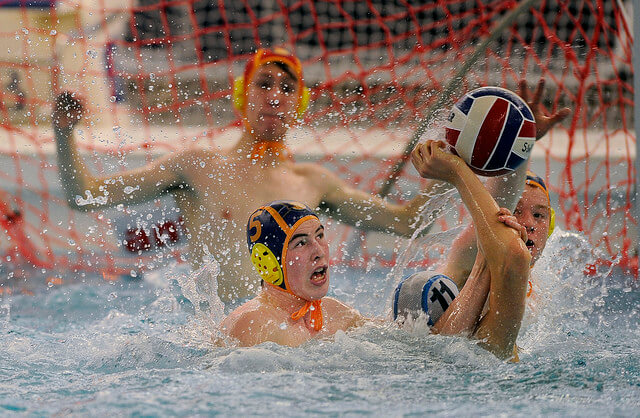Water polo started as a recreational sport with few rules and it was William Wilson, a Bath-Master in Glasgow, who is credited with writing the first set of Rules, but no copy survives. Scottish players were quick to adopt a “passing game” and, when the first International was played against England, the Scottish team prevailed. This superiority was short lived, and it was about 100 years before the Scots beat England again.
From the late nineteenth century swimming clubs proliferated and most had a water polo team. Clubs ran regular galas and these were multi-discipline entertainments. Most concluded with a water polo match. In the mid-1960s Scottish clubs embraced Age Group Swimming which led to a change philosophy. Fewer and fewer clubs maintained a water polo team and participation dropped to a dangerously low level.
The only National Competition was the Scottish Cup, until the Jubilee League started in 1936. The Jubilee League developed into the Premier League and International competition was, for many years, limited to Home Internationals of the 4 countries and dominated by England. Scottish involvement in British Olympic teams has been limited – Gold Medals were won by George Cornet in 1908 and 1912 by Bill Peacock in 1920.

A few more Scots featured up to 1956, the last time GB qualified. Over subsequent years, a number of Scots were selected for British teams at International Tournaments.
Facilities made progress in the game in Scotland difficult as the only deep pools were outdoor and the Scottish climate did not help.
Up to the 1950s, even some Internationals were played in small pools with a shallow end. District Polo was also played in shallow pools.
Introduction of composition balls and rule changes made the game much more mobile, and the standard reached by players was remarkable. Lack of competition in Scotland led to the better Scottish clubs looking to England and the A.S.A. Championships.
When the S.A.S.A. embraced Age-Group swimming, in the early 1960s, everything changed. Swimming club philosophy and organisation changed and fewer and fewer clubs were willing to allocate resources to water polo.
Competitions no longer featured Water Polo games. In many clubs Water Polo had been a recreational and social activity and players competed into middle age and this did not fit the new set-up. Competition carried on but with reduced numbers of teams.
Water polo requires a high level of swimming prowess and still leads to debate as to when good swimmers should get involved in water polo within swimming clubs.
Scottish Junior Championships were added in the 1970s and Women’s and Girls championships followed later. Attempts have been made to add independent Water Polo clubs. Although this has improved the situation at younger ages, the step up to Senior level has proved very difficult. In the last few years National Academies have been set up to improve young players
The great Motherwell side were successful in 1949 and 1950 and there was a 40 year wait until Dunfermline emulated that feat. The Menzieshill Ladies Team won the A.S.A. Championship, and a number of clubs were successful in the Junior Championships from the 1980s.
In the 1980s, the reputation of Scotland’s top clubs grew and led to the “British Deep Water Championship”, which involved the top six National Water Polo League clubs along with the top two Scottish Premier League clubs. Later this developed into the British Water Polo League and Portobello and a composite Scottish side, Caledonia, have played a full part. A British Championship was added, and Portobello have been successful in that.
At International level, Scotland joined a Four-Nation Tournament in 1974 and this expanded into an Eight Nations Tournament, in which Scotland won a couple of times. Scotland started to take part in Junior Tournaments, but financial constraints have led to the International Programme being curtailed.
Read the “In-Depth History” (button below photo) for more detailed history and information “” (guaranteed to cure Insomnia).

